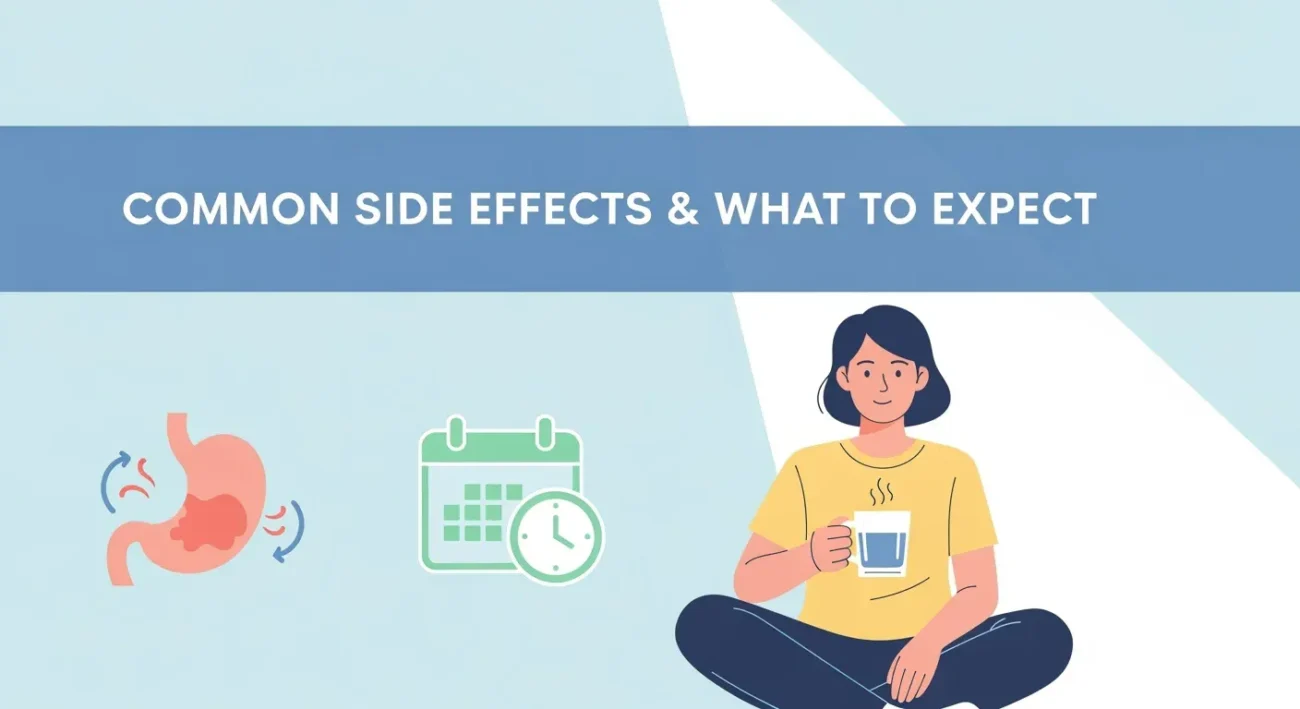Imagine a medicine that helps both with lowering blood sugar and with weight loss two major hurdles for many people. That’s where tirzepatide steps in. It’s been gaining attention lately, in the medical world and in popular health news.
I’ll walk you through how tirzepatide works, how it’s prescribed, what side effects to expect (both common and rare), By the end, you should have a clear, practical understanding of whether tirzepatide might be right for someone like you or someone you care for.
Table: Quick Overview of Tirzepatide Usage & Side Effects
| Category | Key Points |
|---|---|
| What is Tirzepatide | A drug that stimulates two hormones (GIP & GLP-1), used for type 2 diabetes and weight management. |
| How It’s Administered | Once-weekly injection under the skin (subcutaneous), dose started low and increased over time. |
| When It’s Used | For people with type 2 diabetes; also approved for weight loss / obesity (or overweight with related health issues). |
| Usual Duration | Months to years; depends on how well it works, tolerability, goals; some weight regain if stopped. |
| Common Side Effects | Nausea, vomiting, diarrhea, constipation, decreased appetite, abdominal pain. Usually early or when increasing dose. |
| Rare / Serious Risks | Hypoglycemia (especially with other meds), pancreatitis, gallbladder disease, kidney issues, possible risk in thyroid cancer history. |
| How to Minimize Side Effects | Start slow, adjust dosage gradually, monitor, avoid triggering foods, hydration, regular follow-ups with doctor. |
What is Tirzepatide & How It Works
Tirzepatide is a medicine that works by mimicking two natural hormones in your body GLP-1 (Glucagon-like peptide-1) and GIP (Glucose-dependent insulinotropic polypeptide).
- GLP-1 helps you produce more insulin when your blood sugar is high, slows down digestion so you feel full longer, and suppresses appetite.
- GIP also helps with insulin release and plays a role in how the body handles fats. Tirzepatide’s dual action tends to produce stronger effects on blood sugar and weight loss than medicines that mimic only GLP-1.
Because it acts on both, people may see benefits in sugar control and in reduction of body weight, sometimes quite significantly, when used as part of a treatment plan.
How Tirzepatide Is Used: Dosage
Who can use it
Tirzepatide is approved for people with type 2 diabetes. It is also approved (in many places) for people who are overweight or obese and have at least one weight-related health problem (like high blood pressure, sleep apnea, or high cholesterol). It’s not used for type 1 diabetes or as a first treatment in those cases.
How to start & adjust dose
- Doctors usually begin with a low dose (for example 2.5 mg once a week). This gives the body time to adjust.
- After several weeks (often 4 or more), if well tolerated, the dose may be increased to improve results (sugar control, weight loss).
- The maximum dose depends on guidelines in the country, the individual’s health, how well they tolerate the medicine.
Method of administration
- Self-administered with a pen or injector under the skin (subcutaneous).
- Usually given in the thigh, abdomen, or upper arm. Rotate injection sites to reduce irritation.
- It’s once weekly not daily. Much more convenient than many old diabetic meds in this regard.
Duration of treatment
- Many people stay on tirzepatide for months to years, depending on response.
- For weight loss, some studies show that people regain some weight after stopping tirzepatide. So maintenance or longer-term strategy matters.
Common Side Effects & What to Expect

When you begin tirzepatide, or when the dose increases, these are the effects many people notice. Most are mild to moderate and go away over time.
Gastro intestinal (stomach and digestion) side effects
- Nausea: feeling sick in the stomach, sometimes with vomiting.
- Diarrhea: loose or frequent stools.
- Constipation: sluggish bowel movements.
- Abdominal pain / discomfort: cramps, bloating, gas.
- Decreased appetite: you might not feel like eating much this is part of how weight loss happens.
These effects tend to be worst at the beginnings (first few weeks) or when raising a dose. They often improve as your body adapts.
How to Minimize Risk & Handle Side Effects
Even though side effects are common, many people find ways to reduce discomfort. Here are strategies:
Start Slow & Titrate
Begin on the lowest dose. Let your body adapt before increasing. If side effects get too harsh, slow the increase or stay at a lower dose.
Dietary adjustments
- Eat small meals more often instead of big ones.
- Avoid spicy, heavy, greasy foods early on. These often trigger nausea or reflux.
- Include fiber gradually to handle constipation, but increase slowly to avoid gas and bloating.
- Stay well-hydrated, especially if experiencing vomiting or diarrhea.
Timing of meals
Eat when you feel a bit hungry but not starving; don’t try big meals when nauseated. Also, avoid laying down right after eating if you get reflux.
Medical supervision & follow up
- Let your healthcare provider know all your medications so they can watch for interactions.
- Monitor side effects; report serious ones.
- Do lab tests as advised (kidney function, liver, possibly thyroid etc.).
Know warning signs
If you experience severe stomach pain that spreads to the back, persistent vomiting, signs of low blood sugar (e.g. sweating, confusion), or signs of allergic reaction (swelling, rash, breathing difficulty), get medical help immediately.
FAQs
Q: Is tirzepatide safe long-term?
A: Current studies show good effectiveness and tolerability over many months (sometimes years). But because it’s newer, very long-term risks are still being studied (especially rare ones). Your doctor will weigh benefits vs risks in your case.
Q: Will I gain weight back if I stop taking it?
A: Possibly yes. Many studies report that stopping leads to some regain of lost weight. That doesn’t mean it’s useless—just that if weight maintenance is a goal, you and your provider need a plan for after stopping (diet, lifestyle, possibly other meds).
Q: What if I’m also using insulin or other diabetes meds?
A: There is risk of low blood sugar when tirzepatide is used with medicines that also lower blood sugar. Your doctor may reduce the dose of other drugs or monitor you more closely.
Q: Can people with kidney or liver problems use tirzepatide?
A: In many cases, yes, but with caution. Severe kidney disease may require special monitoring, dose adjustments, and close watch if dehydration or other issues occur. Liver function concerns are less well documented but also matter.
Q: What about pregnancy or breastfeeding?
A: There’s limited data, so many doctors avoid using tirzepatide in pregnancy unless clearly needed. If you’re pregnant or planning, discuss this carefully with your doctor.
Q: How soon will I see results?
A: For blood sugar control, improvements often show within a few weeks. Weight loss tends to be more gradual over months. The amount depends on the dose, diet, how much weight you have to lose, and your body’s response.
Q: How does tirzepatide compare to other drugs like semaglutide (Ozempic, Wegovy)?
A: Generally tirzepatide has stronger dual hormone effects, so some studies show greater weight loss and blood sugar lowering. But side effect risk (especially for GI effects) may be a bit higher when used at higher doses, at least during dose increases. Some people tolerate semaglutide better; others do better with tirzepatide. It depends on individual circumstances.
Conclusion
Tirzepatide is a powerful tool in modern medicine: it offers dual benefits for blood sugar control and weight loss. But it’s not a magic bullet. Like all medicines, it comes with trade-offs. Most side effects are manageable, especially with slow dosing, dietary care, and close medical supervision. Knowing what to expect, watching for warning signs, and working closely with a health care provider will help you get the best outcomes. If you or someone you know is considering tirzepatide, talk to a doctor. Ask about your specific risks, what dose schedule might suit you, how to handle side effects, and how to plan for the long term. That way, you can make an informed decision that balances hope and safety.

